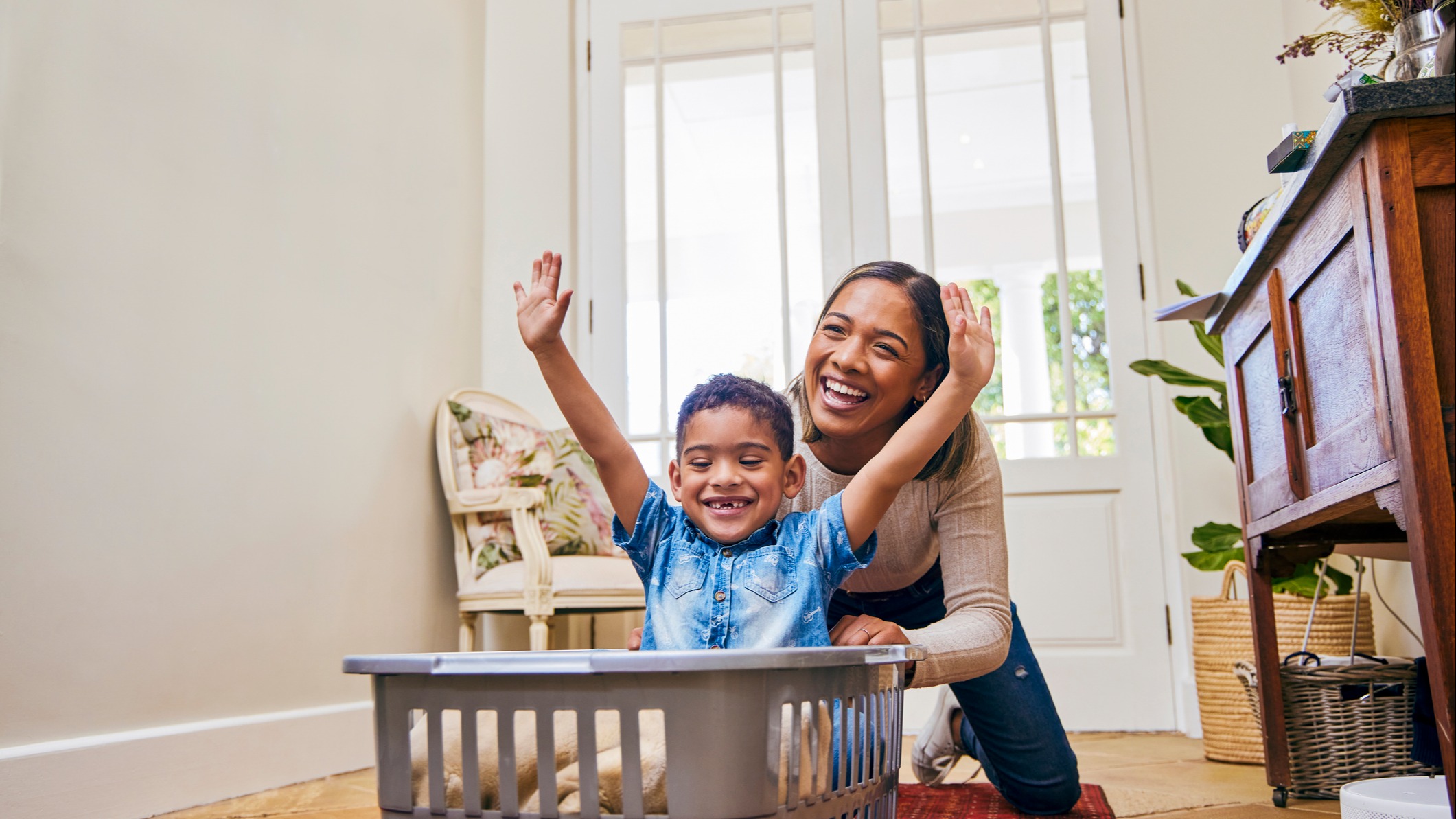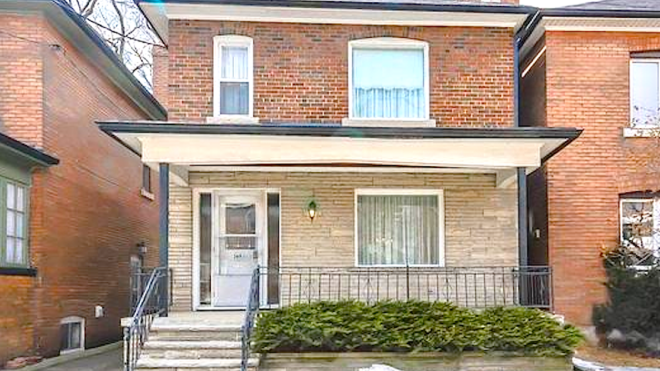
For most people, the urge to hit the reset button on our homes grows strongest when the winter months come to an end. The sun starts to come out, highlighting all the dust and junk in our living spaces, and you just want a like-new home to start spring in. This is extra true for those with ADHD, as months of executive dysfunction and sensory overload can really bring cleaning to a screeching halt.
So, how does one spring clean successfully when your mind is fighting against you like that? We’ve spoken before about decluttering tips and tricks, so let’s discuss cleaning tips. Scrubbing the sink, vacuuming the floors, anything that doesn’t involve organization but just simple wiping and washing.
Here are a few things to think about when starting your 2024 spring cleaning journey…
Start with a few questions.

Just like with any other area of life you have difficulty with, you need to ask yourself certain questions to move on and fix it. What tasks do I struggle with most? What happens when I find myself giving up? How do I feel when I give up? Start with an easier question, not the hardest and most stressful task. Pick a task you do at least once a week that you practically have to force yourself to do it. Laundry, no one likes laundry. When you feel yourself folding sheets and leaving the room, leaving a pile of clothes on the bed, try to pinpoint why this is. Is it because you’re bored? Try to make it more fun by playing music or watching a show at the same time. Is it because it’s overwhelming?
Fold all the T-shirts, take a break, then come back for the socks (and so on). Ask yourself what would make the task easier and do it, then try the same thing with a harder task. Is it lonely? Make the task sociable if you can, make dusting a teaching moment for one of your kids, and task them with wiping down the TV or dinner table — this shares the responsibility and makes room for some nice conversation while you’re at it.
Use a timer and checklist with a cleaning schedule.
Creating and using a schedule with ADHD is easier said than done, as the “just do it” mentality just doesn’t and shouldn’t work with everyone. That being said, taking some of your spare time to work on a schedule before you start the deep clean will help in the long run. A schedule can be as simple as a piece of paper with some dates and times written on it with corresponding tasks, or you can find a downloadable schedule online that goes a little more in-depth. It all depends on how your mind works best with time management and problem-solving.
You also need to keep spoon theory and your specific routine — if it changes a lot — in mind when creating a schedule, because you may wind up wanting to abandon it if it doesn’t work out well the first time. Make allowances for low energy, sensory overload, and other factors that may disrupt your ability and motivation to clean. ADHD isn’t something to be ignored or fought against, you need to work with it. So creating the schedule in little chunks will help, and knowing in advance that it’s OK to break it now and again for a good reason.
Say you create a schedule for Monday afternoon where you clean the kitchen countertops. Then, if you get stressed and overwhelmed, stick to the schedule in the sense that you don’t swap the kitchen for another room or task, but take an extra long break in order to regroup and chill, then return later. This keeps the main goal in focus, without forcing the task and demotivating yourself. Using a timer for each task, and each break will give your mind time to heighten that focus while reminding you that soon it’ll be over with anyway.
Clean by room and category.
A big obstacle when it comes to cleaning with ADHD is starting other tasks before your initial task is finished. For example, you start cleaning the living room and realize something in that room actually belongs in the bathroom (a hand lotion or brush), so you take it back to the bathroom. Then while you’re in the bathroom, you see the drawer you keep that object in is a mess, so you start tidying that drawer. You find a makeup product that belongs in your bedroom vanity, so you take it to the bedroom and start tidying your vanity instead. By the time you’re exhausted and the kids are due home from school, all three tasks are only a quarter done. Nothing’s clean or tidy, and you’ve exerted extra energy. To combat this, give yourself permission to keep the other rooms untidy, which may feel uncomfortable, but the more you practice, the less uncomfortable you’ll be.
Pick a room, and pick a category within that room to tidy. For example, living room surfaces and countertops. Once there’s nothing to tidy away, start cleaning. You’ll have a much easier time wiping down countertops and dusting surfaces if there’s nothing on them. Then quit for the day. The next day, pick another category in that room — floors maybe. Tidy away all the toys, boxes, cables, and dropped candy, and then get the mop or vacuum out. Your brain can’t attach itself to other tasks if there are no other tasks to accomplish. This is obviously schedule-dependent, as time is another obstacle we all have, but the main idea is chunking your tasks rather than looking at the big picture. Have many clean rooms, not one clean home, essentially.
Use cleaning tools and products designed for convenience.
The longer you spend cleaning, and the more effort it takes to do it, the more likely you are to resent it after a while. Take advantage of products that claim to make cleaning easier, as that’s literally what they’re designed for. There’s no point in scrubbing grout with a sponge until your fingers cramp if you can use an electric scrubber (like a big electric toothbrush for your tiles, drain cover, or faucet) that will do most of the work for you. A sweeper mop can cut your mopping and drying time in half, and the head is usually machine washable, too.
And let’s not forget the Roomba, vacuuming for you as you do literally anything else, every day. Whatever takes the pressure off, and will do some of the work for you, will do wonders in the long run. Though with certain products you may still have to do a deep clean now and again, the daily clean will be so much easier, making that deep clean easier eventually. And let’s face it, gadgets are fun, and if you can make the process fun in any way, then you won’t dread doing it.
Reward yourself!
Once you’ve knocked an item off your checklist, it’s time for a reward. What that reward is, is up to you — a cupcake, an episode of your favorite TV show — as long as it’s fun and comforting. What you can’t get into the habit of doing, however, is rewarding yourself with basic self-care. “I’ll go to the bathroom once I finish cleaning the floors,” or “I’ll only eat my lunch once the bath has been scrubbed,” will not only negatively affect your body, but will make you resent the cleaning task at hand. For many people, rewarding themselves can be difficult, as technically there’s no rule against not doing the task and having the "reward" anyway. But it all comes down to practice.
It may help to ask a family member to hold that reward for you as accountability. If you clean as a family, that accountability will be easier to stick to as you would never tell your partner or kid, “Just finish wiping the dinner table before you pee,” and they wouldn’t say it to you. With each small reward for a small task, make sure you’re thinking about a big reward once your spring cleaning is complete. A vacation, a day trip to a theme park, a dinner out, anything you feel is a worthy reward for all the hard work you’ve done, and the difficulties you met along the way.




